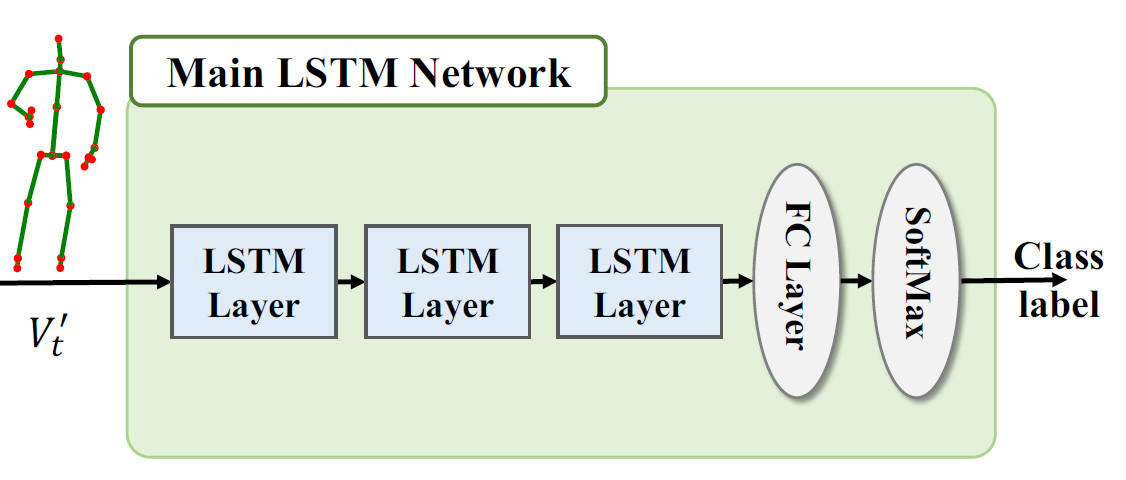A Simple But High-accuracy LSTM for human Action Recognition
-
matlab_m/: transform the given dataset(NTU RGB+D) to your need , from ".skeleton" to ".mat"demo.m: an example for you to transform the dataset using the given functions .You shall verify the "fileFolder","dirOutput",and "savepath"classfile.m: divide the "*.mat" file according to their class.read_skeleton_file.m: a function to read the skeleton files (given by NTU RGB dataset)savetomat.m: a function to save the skeleton data from skeleton files to mat filesshow_skeleton_on_depthmaps.m: a function to show the skeleton information on the depthmaps(thanks to the NTU RGB+D dataset)show_skeleton_on_IR_frames.m: a function to show the skeleton information on the IR frames(thanks to the NTU RGB+D dataset)show_skeleton_on_RGB_frames.m: a function to show the skeleton information on the RGB frames(thanks to the NTU RGB+D dataset)
-
lstm_py/: the train and test python file using tensorflow lib.main.py: the train python file using tensorflow.evaluate.py: the test file to evaluate your model perfermance.mtop.py: transform the skeleton files form ".mat" to ".npy" for python files . Also, you may use it for seperate train and test set .model_lstm/: well-trained model of lstm .
-
keras: the train and test python file using keras lib.-
main.py: an example for you to transform the dataset using the given functions .You shall verify the "train_file", and "test_file"
-
-
code only tested on linux system (ubuntu 16.04)
-
Python 3 (Anaconda 3.6.3 specifically) with numpy and matplotlib
-
Tensorflow
-
keras
-
matlab
In file
demo.mfileFolder=['D:\research\ntuRGB\ske_f\',num2str(t),'\'];%using your own dataset path savepath=['D:\research\ntuRGB\mat_f\',num2str(t),'\'];%using your own save path
In file
classfile.mSOURCE_PATH_t =[ 'D:\research\ntuRGB\mat_f\',num2str(i),'\'];%using your own "*.mat" files path DST_PATH_t1 = [ 'D:\research\ntuRGB\mat_f\',num2str(i),'\test'];%using your own wanted test set saved path DST_PATH_t2 = [ 'D:\research\ntuRGB\mat_f\',num2str(i),'\train'];%using your own wanted train set saved path
matlab demo.m matlab classfile.m
In file
mtop.pytrainpath='./CS/train/'#verify your train data files forder here ("*.mat" file) testpath='./CS/test/'#verify your test data files forder here ("*.mat" file)
In file
main.pytrain_file='CV_20/train' #verify your train data files forder here test_file='CV_20/test' #verify your train data files forder here model_file="model/my-model.meta"#verify your train model data file model_path="model/"#verify your train model data folder
python lstm_py/main.py-
you will get your own model saved in the "model/"
In file
evaluate.pytrain_file='CV_20/train' #verify your train data files forder here test_file='CV_20/test' #verify your train data files forder here model_file="model/my-model.meta"#verify your train model data file model_path="model/"#verify your train model data folder
python lstm_py/evaluate.pyIn file main.py
train_file='CV_20/train' #verify your train data files forder here
test_file='CV_20/test' #verify your train data files forder here
model_file="model/my-model.meta"#verify your train model data file
model_path="model/"#verify your train model data folderpython keras/main.py